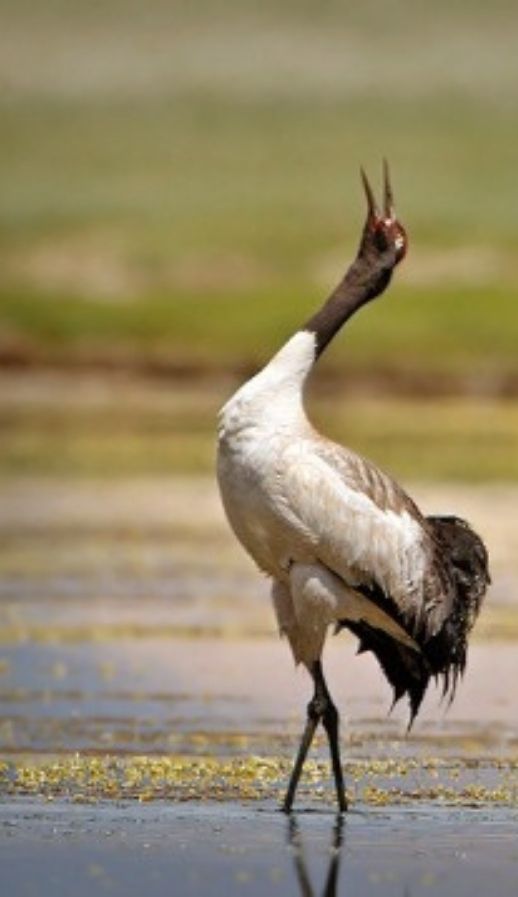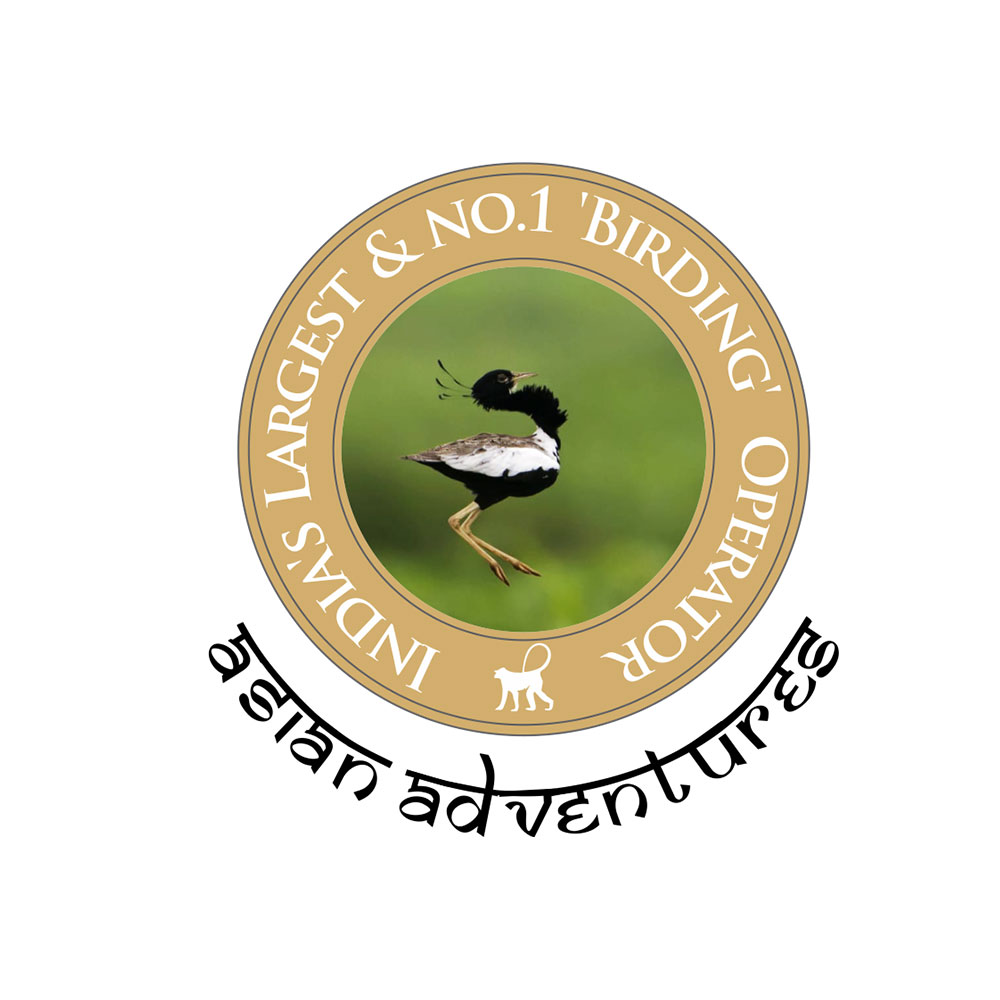Overview
The forests of Central India have long been a mecca for wildlife enthusiasts, and the tiger reserves of Madhya Pradesh even more so. Not only do these national parks have a high density of tigers, resulting in better sightings, but they are also home to a wide variety of landscapes, meaning that you get the maximum number of birds and animals possible in these areas.
Tadoba National Park, part of the Tadoba-Andhari Tiger Reserve, is located in central India, in the state of Maharashtra. It is Maharashtra’s oldest and largest national park and is famous for having one of the highest densities of tigers in India. The park is named after a local god, Taru. Tadoba was established as a national park in 1955.
Pench National Park is located in central India, on the border of the states of Maharashtra and Madhya Pradesh. Established in 1975, it gets its name from the Pench River that flows through the park, dividing it into almost equal halves. The well-forested area of Seoni is famous as the setting of Rudyard Kipling’s The Jungle Book. The main attraction here is the tiger, although the park also has a good population of leopard, sloth bear, and several deer species, as well as being home to many birds.
Kanha National Park is the largest national park in Madhya Pradesh, India. Created in 1955, the tiger reserve has significant populations of tiger, sloth bear, and leopard, as well as other mammals, as well as around 300 species of birds. The Southern Swamp Deer (or Hard-ground Barasingha) is found only in Kanha, although relocation efforts are underway in other places in central India.
Named after the Bandhavgarh Fort that now stands inside the park, Bandhavgarh National Park has one of the highest tiger densities in India. Originally the hunting ground for the Maharaja of Rewa, the tiger reserve was declared a national park in 1968. Apart from tigers, the park also boasts a healthy population of leopards, sloth bears, and other mammals, as well as more than 250 species of birds.

Meals: On own
Accommodation: Hotel Shanti Palace or similar
Arrive at Delhi airport. You will be met and transferred to the hotel. You have the evening free for rest or visit the local market. You may ask us for tours (optional) covering various monument sites, museums, bird watching habitats, tourist market, food joints, theater, performance venue etc.
Overnight stay.

Meals: Breakfast in Delhi and Dinner at Tadoba National Park
Accommodation: Wildlife Resort
Post breakfast, check out and proceed to the airport for your flight to Nagpur. Arrive at Nagpur Airport and drive towards the beautiful Tadoba National Park. Enjoy an afternoon safari, exploring the jungle
Overnight stay.
Key species: Tiger, Leopard, Sloth Bear, Dhole, Crested Honey Buzzard, Grey-headed Fish Eagle, Changeable Hawk-Eagle, Common Emerald Dove, Green Imperial Pigeon, Yellow-footed Green Pigeon.

Meals: Breakfast, Lunch, and Dinner
Accommodation: Wildlife Resort
Morning and afternoon jeep safaris in Tadoba.
Overnight stay
Key species: Tiger, Spotted Deer, Sambar, Nilgai, Wild Boar, Golden Jackal, Indian Peafowl, Grey Junglefowl, Greater Coucal, Coppersmith Barbet, Red-vented Bulbul, Greater Racket-tailed Drongo, Indian Roller

Meals: Breakfast, Packed Lunch and Dinner
Accommodation: Wildlife Resort
Early morning Safari (0600 - 0900 hrs) at Tadoba National Park. After breakfast, drive to Pench (230 Kms/ 5 Hrs.). Enjoy the ambiance of the resort or opt for in-house activities.
Overnight stay.
Key species: Tiger, Sambar, Spotted Deer, Wild Boar, Indian Peafowl, Grey Junglefowl, Greater Racket-tailed Drongo, Black Drongo

Meals: Breakfast, Lunch and Dinner
Accommodation: Wildlife Resort
Morning and afternoon jeep safaris in Pench.
Overnight stay
Key species: Tiger, Dhole, Leopard, Spotted Deer, Sambar, Nilgai, Wild Boar, Golden Jackal, Indian Peafowl, Coppersmith Barbet, Red-vented Bulbul, White-bellied Drongo, Indian Roller
Note: Pench National Park will remain closed for safaris on Wednesday afternoon

Meals: Breakfast in Pench, Packed Lunch and Dinner at Kanha
Accommodation: Wildlife Resort
Enjoy morning safari in Pench National Park. After breakfast, drive to Kanha National Park. You will have the rest of the day at leisure to freshen up, chat with the in-house naturalist, or do a little more homework before you begin your tiger quest.
Overnight stay
Key species: Tiger, Sloth Bear, Jungle Owlet, Indian Vulture, Changeable Hawk-Eagle, Crested Serpent Eagle, Black-hooded Oriole, Indian Golden Oriole, White-bellied Drongo

Meals: Breakfast, Lunch, and Dinner
Accommodation: Wildlife Resort
Explore the wilderness of Kanha, and search for the beautiful Tiger, with morning and afternoon safaris. This tiger haven is the largest national park in Central India and is home not only to Tigers, Leopards, and Sloth Bears but also to the Hard-ground Barasingha (also known as the Southern Swamp Deer). From the lush evergreen Sal forests to the Kanha meadows, this park has a variety of habitats, each with its own unique mix of birds and mammals.
Overnight stay.
Key species: Tiger, Leopard, Golden Jackal, Sloth Bear, Sambar, Spotted Deer, Hard-ground Barasingha, Changeable Hawk-Eagle, Crested Serpent Eagle, Indian Peafowl, Red Junglefowl, Red-naped Ibis, Yellow-footed Green Pigeon, Jungle Owlet, Sirkeer Malkoha
Note: Kanha National Park will remain closed for safaris every Wednesday afternoon

Meals: Breakfast in Pench, Packed Lunch and Dinner at Bandhavgarh National Park
Accommodation: Wildlife Resort
After a final morning safari in Kanha, drive from one beautiful Central Indian forest to another. Today, we move from Kanha to Bandhavgarh National Park (5.5 hour drive). Bandhavgarh may not be as large an area as Kanha, but the park boasts one of the highest tiger densities in India. You will have the rest of the day at leisure to freshen up, relax, or even do a little birdwatching in the resort grounds.
Overnight Stay.
Key species: TIger, Leopard, Gaur, Hard-ground Barasingha, Sambar, Crested Serpent Eagle, Brown Hawk-Owl, Oriental Turtle Dove, Yellow-footed Green Pigeon

Meals: Breakfast, Lunch, and Dinner
Accommodation: Wildlife Resort
Continue exploring the Tiger’s domain, and learn more about the big cat, its fellow forest dwellers, and the forest that it lives in, with morning and evening safaris. Apart from being home to this regal predator, Bandhavgarh is also a delight for birdwatchers. The area hosts a variety of habitats, including forest, grassland, cliffs, and ponds, which play home to a wide variety of bird species both resident and migratory, all under the majestic backdrop of Bandhavgarh Fort.
Overnight Stay.
Key species: Tiger, Leopard, Golden Jackal, Sloth Bear, Gaur, Sambar, Lesser Adjutant, White-naped Woodpecker, Black-rumped Flameback, Malabar Pied Hornbill, Black-hooded Oriole, Egyptian Vulture, Indian Vulture, Changeable Hawk-Eagle, Shikra, White-eyed Buzzard
Note: Bandhavgarh National Park will remain closed for safaris on every Wednesday afternoon

Meals: Breakfast
Accommodation: Hotel Shanti Palace or Similar
After breakfast, you will be transferred to the Jabalpur airport (190 Kms/ 3.5 Hrs.) for a flight to Delhi.
Overnight stay in Delhi.

Accommodation: Hotel Shanti Palce or Similar
Meals: Breakfast
Enjoy the day at leisure or visit some famous monuments of Delhi such as Red Fort, Humayun’s Tomb, Jama Masjid, Lotus Temple, etc.
Highlights
- One of the most relaxed and popular Tiger tours
- High success rate with Tiger sightings and other fauna such as Sambhar & Spotted Deer, Gaur & Asiatic Jackal, Striped Hyena (rare), Palm Squirrel & Indian Fox and Leopard
- Great birding experience
- Unique accommodation with excellent hospitality
- Glimpses of the beautiful landscape, architecture and lifestyle of central India
Included
- Accommodation on above specified sharing basis Meals as per the itinerary
- Transfer from Tadoba to Pench National Park Transfer from Pench to Kanha National Park
- Transfer from Kanha to Bandhavgarh National Park All private jeep safaris
- Mandatory park wildlife guide for all rides Park entrance fee for all rides
- Transfer from Bandhavgarh to Jabalpur Monument guide in Delhi
- Transport for local sightseeing in Delhi Transport from Delhi airport to Hotel | All taxes
Video
Location
Stories

Ladakh
North India, the land of Ladakh, looks as though it was made for birdwatching and photography.

Gir National Park Gujarat
Sometimes it is not just the species spotted but also the amazing moments. Some of our guests had the unique opportunity to witness the mating of Asiatic Lions in the Gir Forest, truly a special moment.

Delhi
Surajpur is an amazing wetland close to the nation’s capital. Apart from being one of the monsoon homes for the Bristled Grassbird, it is also home to another sought-after species: the Bengal Bush Lark.

Rajasthan
One advantage of living near the birding hotspot of Bharatpur is that you can see some amazing birds, like the graceful Sarus Crane, in your backyard during this lockdown
FAQ's
- How long is each safari in Pench, Kanha, and Bandhavgarh National Parks?
-
Each safari typically lasts around 3-4 hours. Morning safaris generally start at dawn, around 6:00 AM, and end by 10:00 AM, while afternoon safaris usually begin around 3:00 PM and conclude by sunset, around 6:00 PM. The timings may vary depending upon the season.
- What is the best way to prepare for a safari in these national parks?
-
Wear neutral-coloured clothing to blend into the environment, carry a hat and sunglasses for sun protection, and bring binoculars and a camera with a telephoto lens. Ensure you have water, snacks, and insect repellent. Listen to your guide’s instructions to maximise your chances of wildlife sightings. Bring your non-biodegradeables back.
- Are there any restrictions on photography during safaris?
-
Flash photography is generally prohibited as it can disturb wildlife. It's also important to maintain a respectful distance from animals and not to disrupt their natural behavior. Always follow your guide's advice regarding photography etiquette. Do not get off the vehicle. Do not make loud noises if any situation excites you.
- Can I use my mobile phone during the safari?
-
While mobile phones can be used for photography, it’s advisable to keep them on silent mode to avoid disturbing wildlife. Phone calls should be avoided during the safari to maintain the quiet environment necessary for wildlife viewing.
- What kinds of vehicles are used for safaris in these parks?
-
Open jeeps (usually 4x4 vehicles) are used for safaris, providing unobstructed views for photography and wildlife spotting. In some zones, larger vehicles may be used for group safaris.
- What safety precautions are taken during the safaris?
-
Experienced guides assigned by the park authorities accompany all safaris to ensure safety. It’s important to stay seated and keep your hands inside the vehicle. Always follow the guide’s instructions and maintain a safe distance from the wildlife.
- What is the typical weather like during the safari season?
-
From November to February, the weather is generally cool and pleasant, with temperatures ranging from 10°C to 25°C (50°F to 77°F). Early mornings and evenings can be chilly, so it’s advisable to layer your clothing.
- How can I maximize my chances of spotting a Bengal Tiger?
-
Early morning and late afternoon safaris are the best times for tiger sightings. Being patient and quiet, and paying attention to the guide’s instructions, can increase your chances. Understanding tiger behavior and looking for signs like pug marks and alarm calls from other animals can also help.
- Are there opportunities to see other big cats besides tigers?
-
Yes, besides Bengal Tigers, you may also spot Indian Leopards in all three parks. These big cats are elusive and often seen resting on tree branches or moving through dense vegetation.
- What bird species are commonly seen in Kanha National Park?
-
Kanha is home to a variety of bird species, including the Indian Roller, Lesser Adjutant, Red Junglefowl, Crested Serpent Eagle, Indian Pitta, Grey Hornbill, various barbets and kingfishers, and the beautiful Indian Paradise Flycatcher.
- What wildlife conservation efforts are in place in these parks?
-
These parks have stringent conservation programs focused on protecting their flagship species, such as the Bengal Tiger, Swamp Deer, Indian Bison, etc. Anti-poaching measures, habitat restoration, and community involvement in conservation are key strategies.
- Can I visit any cultural sites near these parks?
-
Yes, near Bandhavgarh, you can visit the ancient temples, which offer historical insights. Local tribal villages near these parks also offer cultural experiences and insights into their way of life.
- What are the accommodation options like in these parks?
-
Accommodations range from luxury resorts to eco-friendly lodges and budget guesthouses. Most provide comfortable amenities, including hot water, clean rooms, and local cuisine. Some lodges offer additional facilities such as swimming pools and wildlife libraries.
- Is there any special preparation required for visiting tribal villages?
-
When visiting tribal villages, it's respectful to dress modestly and ask for permission before taking photographs of people. It’s also a good idea to learn a few basic phrases in the local language or have a guide who can translate.
- What other animals can be seen in Pench National Park?
-
Besides tigers and leopards, Pench is home to Wild Dogs (Dhole), Indian Gaur, Jackals, Sambar Deer, Spotted Deer, and various bird species like the Malabar Pied Hornbill and Indian Scops Owl.
- How accessible are these parks for people with disabilities?
-
Some lodges and safari vehicles can accommodate people with disabilities, but it’s important to inform us in advance to make necessary arrangements. Paths in the parks may be uneven, so mobility aids might be required.
- What kind of meals are served at the lodges?
-
Meals typically include Indian cuisine, with an emphasis on fresh, locally sourced ingredients. Special dietary requirements can often be accommodated with prior notice.
- Are there any health precautions to take before visiting these parks?
-
It’s advisable to consult with your doctor about necessary medications. Be cautious about drinking only filtered water to avoid stomach infections.
- What should I do if I encounter insects or snakes during the safari?
-
Stay calm and avoid sudden movements. Do not attempt to handle any wildlife. Inform your guide immediately, as they are trained to handle such situations safely. Wearing long sleeves and trousers can help protect against insect bites.
- How do the lodges contribute to local conservation efforts?
-
Many lodges support local conservation by employing local staff, participating in anti-poaching initiatives, and funding community development projects. They often promote eco-friendly practices such as waste reduction, water conservation, and the use of solar power.






























